- Discovering the Hill
- No content found
- Plan your visit
- No content found
- Agenda
- Shop
La Chaux-de-Fonds (Switzerland)
1887 Roquebrune-Cap-Martin (06) 1965
An architect, a painter, a sculptor, a poet, a designer, Le Corbusier’s real name was Charles-Edouard Jeanneret-Gris. As early as the 1920’s he appeared as the thinker of what modernity should be like and as an all-round artist.
Le Corbusier was a great theorist and he appeared as the leading light in the modern movement. He gave a visual definition of the modern movement with “five points of architecture”, which are a set of architectural principles: the free designing of the ground plan, the free design of the façade, the column principle, the horizontal window, and the roof gardens. He pleaded for rationalizing building and for using new materials, particularly concrete as he liked its neat aspect. Showcasing exposed concrete gave birth to “brutalist” architecture. Le Corbusier also strained to make his works more consistent by creating the Modulor, a system of universal proportions based on the human scale.
“ARCHITECTURE IS THE MASTERLY, CORRECT AND MAGNIFICENT PLAY OF VOLUMES BROUGHT TOGETHER IN LIGHT”
LE CORBUSIER
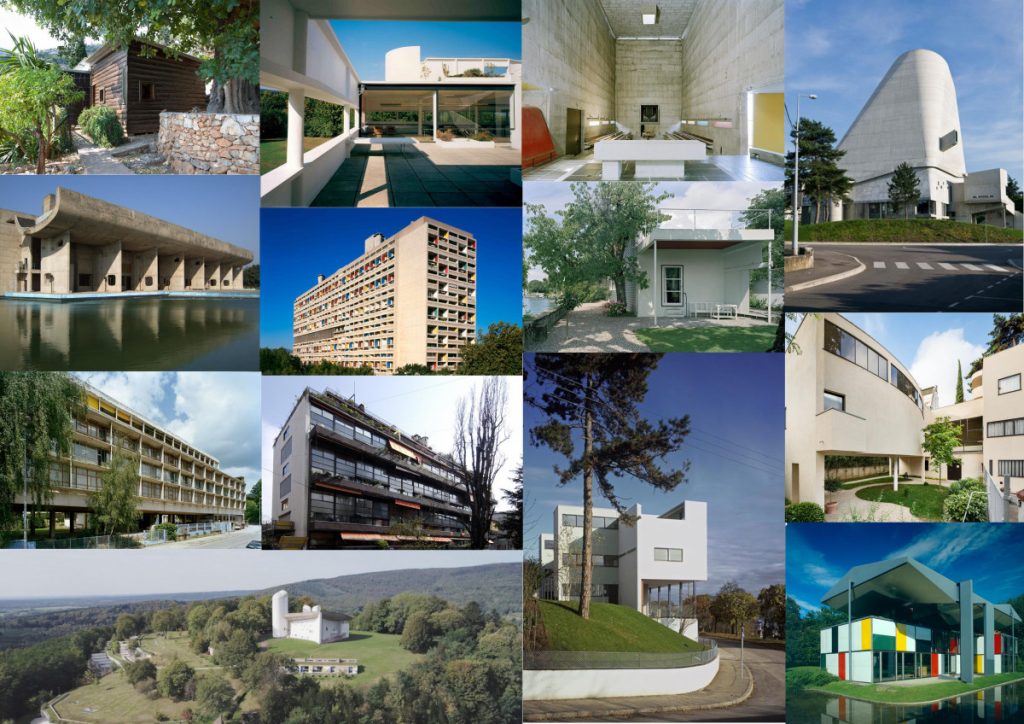
Thanks to his art of finding the right phrase, Le Corbusier, along with his cousin Pierre Jeanneret, summed up the most modern architectural developments of his time in five points:
Le Corbusier used systematically these five points in his architecture, as it is the case in the famous Villa Savoye (Poissy (78), 1928-1931
They are still in use today.
A marvel of cleverness and functional efficiency, the villa called “the Lake” is an architectural manifesto where we can already find the main ideas of the programme developed by Le Corbusier for his purist villas in the 1920’s. A genuine laboratory for his modern ideas, “the Lake” villa is one of his most personal and most inventive creations.
“The Lake” villa is the result of Le Corbusier’s research for user-friendly architecture and of functionalist analysis, quite uncommon in 1923. He aimed at creating a typological standard: a narrow house built with a single span. This standard has been taken up ever since everywhere in the world. A prototype of the minimal house offering maximum comfort and space, “the Lake” villa summarizes ideas which had a considerable influence during the 20th century. These ideas tackle fundamental questions, such as minimum housing and housing for everyone. This modest building is only 64 m2 big but it already corresponds to three of the “five points of modern architecture”: a free ground plan, a roof-garden and a horizontal window, one of the first in the history of architecture. A genuine technical experiment, this window is 11 meters long and shows a new idea of the framing of the landscape and of the relationship to the site.
Cette villa a été construite dans la plus grande simplicité, pour des clients dépourvus totalement d’idées préconçues : ni modernes, ni anciens. Leur idée était simple: ils avaient un magnifique parc formé de prés entourés de forêt; ils désiraient vivre à la campagne; ils étaient reliés à Paris par 30 km d’auto.
On va donc à la porte de la maison en auto, et c’est l’arc de courbure minimum d’une auto qui fournit la dimension même de 1a maison. L’auto s’engage sous les pilotis, tourne autour des services communs, arrive au milieu, à la porte du vestibule, entre dans le garage ou poursuit sa route pour le retour: telle est la donnée fondamentale.
Autre chose: la vue est très belle, l’herbe est une belle chose, la forêt aussi: on y touchera le moins possible. La maison se posera an milieu de l’herbe comme un objet, sans rien déranger.
Si l’on est debout dans l’herbe, on ne voit pas très loin l’étendue. D’ailleurs, l’herbe est malsaine, humide, etc… pour y habiter; par conséquent, le véritable jardin de la maison ne sera pas sur le sol, mais au-dessus du sol, à trois mètres cinquante: ce sera le jardin suspendu dont le sol est sec et salubre, et c’est de ce sol qu’on verra bien tout le paysage, beaucoup mieux que si l’on était resté en bas.
Dans nos climats tempérés, avec pluies fréquentes, il est utile d’avoir un jardin dont le sol soit sec instantanément; le sol du jardin est donc en dallage de ciment, posé sui sable, assurant un drainage instantané des eaux pluviales.
Mais on continue la promenade Depuis le jardin à l’étage, on monte par la rampe sur le toit de la maison où est le solarium.
L’architecture arabe nous donne un enseignement précieux. Elle s’apprécie à la marche, avec le pied; c’est en marchant, en se déplaçant que l’on voit se développer les ordonnances de l’architecture. C’est un principe contraire à l’architecture baroque qui es conçue sur le papier, autour d’un point fixe théorique. Je préfère l’enseignement de l’architecture arabe.
Dans cette maison-ci, il s’agit d’une véritable promenade architecturale, offrant des aspects constamment variés, inattendus, parfois étonnants. Il est intéressant d’obtenir tant de diversité quand on a, par exemple, admis au point de vue constructif, un schéma de poteaux et de poutres d’une rigueur absolue.
La construction est faite sur un jeu de poteaux équidistants, portant des chevalets qui, eux mêmes, supportent des poutrelles régulières à égales : ossature indépendante, plan libre.
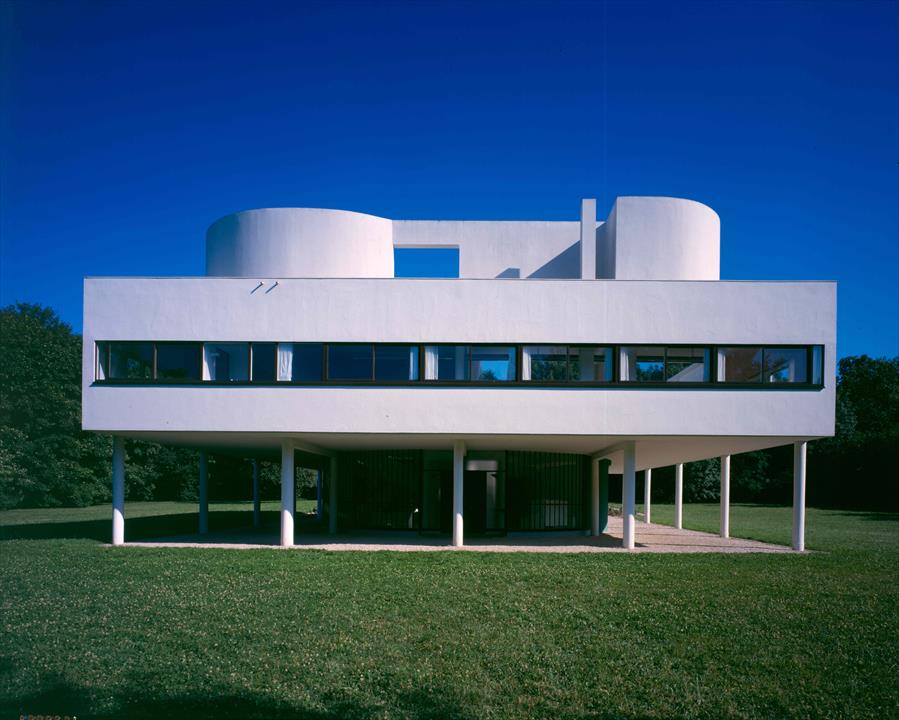
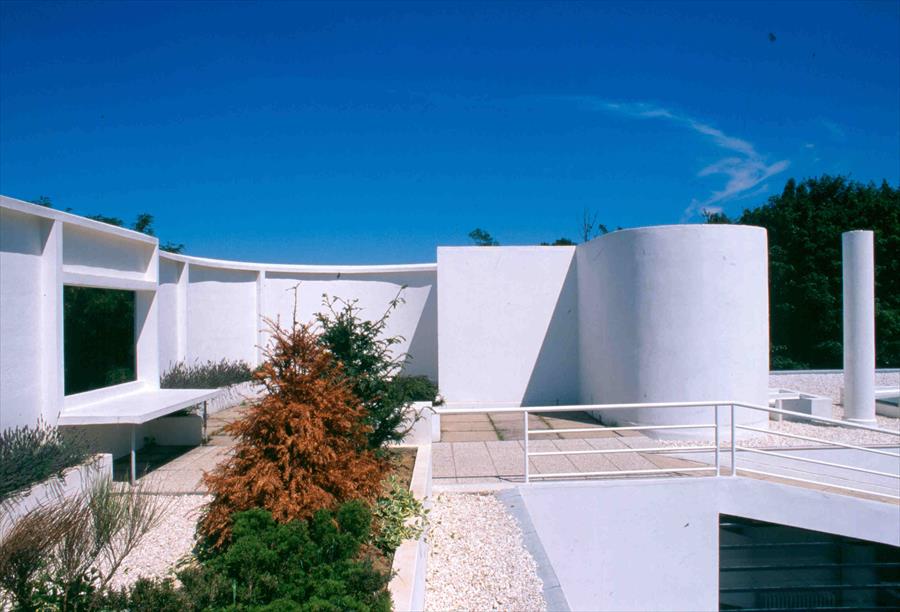
Le Cabanon is a typical application of the architectural principles. It is a 366×366 cm room, 226 cm high (except for a tiny recess which was necessary in order to meet the regulations).
It was prefabricated in Corsica and then assembled on site, the outside and the roof being independent. The use of this building exceeded all hopes.
The two ventilation-mosquito nets proved to be a success.
This system has been in use ever since in India, in public and private buildings.
Le Cabanon has its walls and roof insulated with fiberglass.
Extract from Le Corbusier, Complete Works, volume 5, 1946-1952
The plan for the town of St-Dié was unanimously rejected by the upper, middle and lower classes, the socialists, the communists, etc… The Ministry of Reconstruction did not press the matter, and today St-Dié is being reconstructed but not according to that plan. The plan included eight “Unités d’Habitation”. That was in 1945. Marseilles had not then been built but was struggling under the attacks which beset it right up to the day of its solemn inauguration (14th October 1952). The chronological order was reversed. Marseilles should have been built in 1946 and St-Dié in 1952.
From all the effort at St-Dié, there remains but one small pure flame. One of the young industrial promoters, Jean-Jacques Duval, was friendly towards the 1945 plan. He had a millenary factory which had been destroyed by the Germans, and Le Corbusier undertook to design a new one. The construction was slow, constantly held up by circumstances. But the little Duval factory at St-Dié contains certain elements pertaining to modern architecture:
Extract from Le Corbusier, Complete Works, volume 5,1946-1952
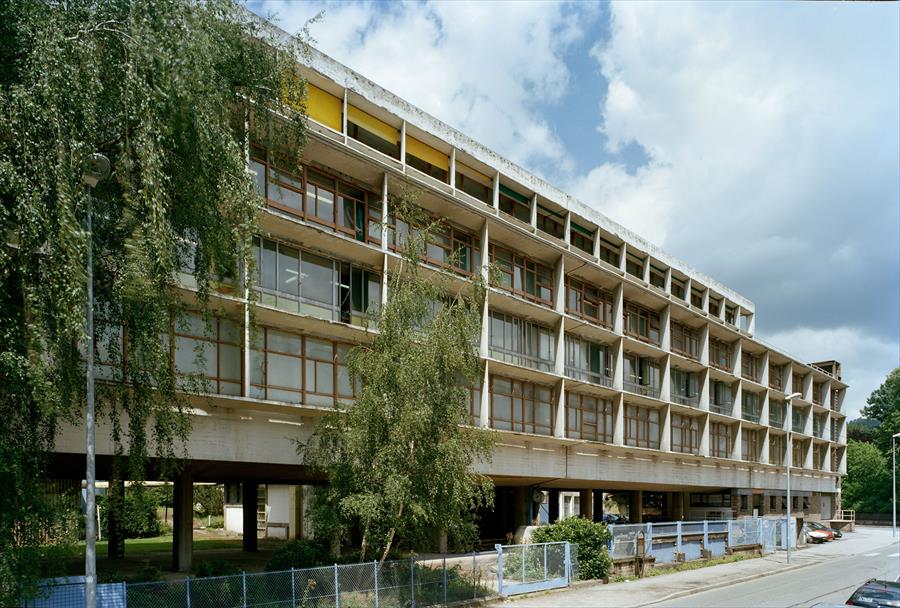
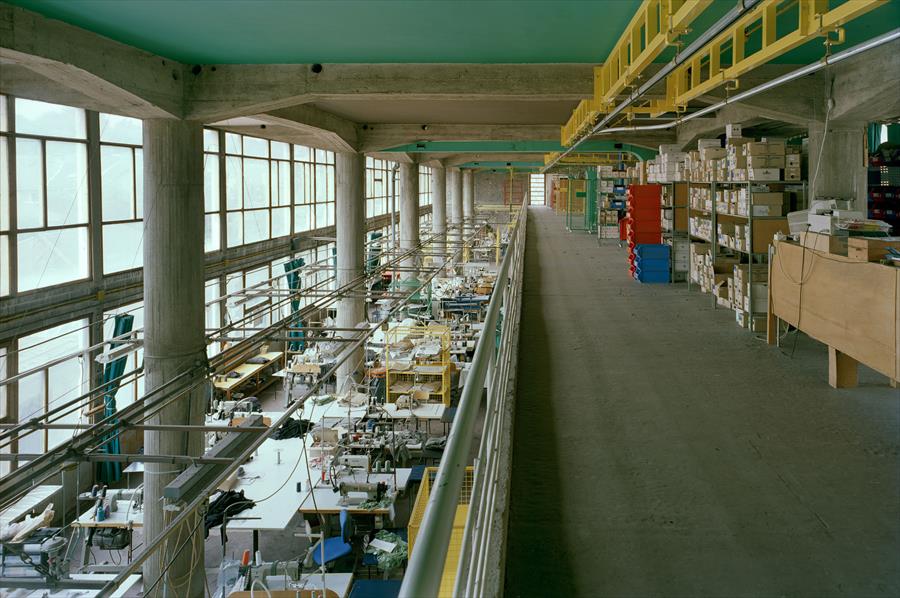
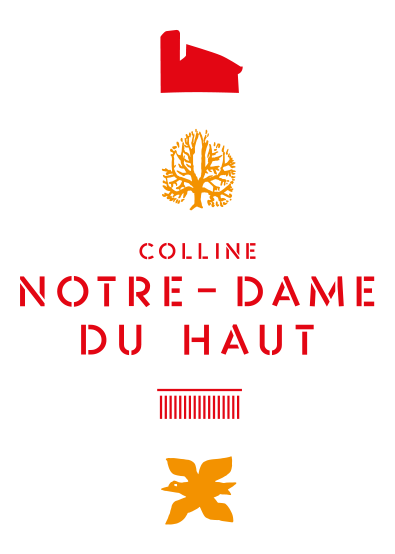
13 rue de la Chapelle
F-70250 Ronchamp
+33 (0)3 84 20 65 13
Contact
Until Friday 18 April 2025: 10am to 5pm
From Saturday 19 April 2025: 10am to 6pm
From Monday 12 October 2025: 10am to 5pm
Last admission: 30 minutes before closing time. Closed on 25 December and 1 January
For journalists
Connect
Educational resources
To go further
+33 (0)3 84 20 73 26
Contact
Réalisation DN Consultants